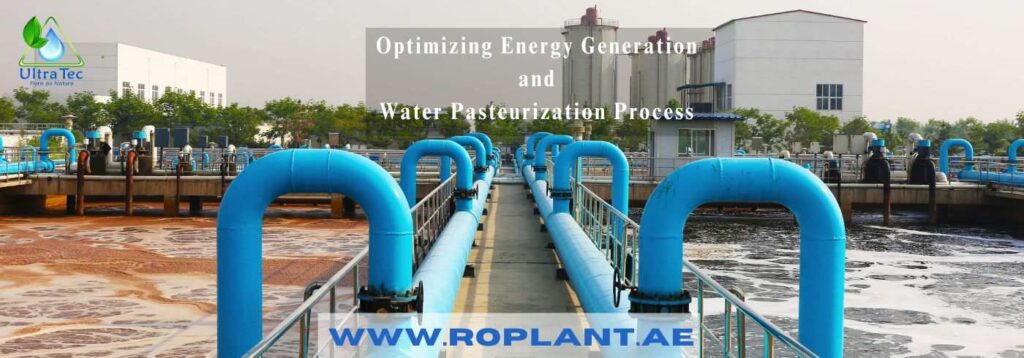Water pasteurization revolves around heating food products to specific temperatures for set durations. This process is designed to eradicate microorganisms and other pathogens that could cause illnesses. It also minimizes the risk of transmitting various infections from the food source by reducing their presence in the final product. We know that many food items, such as milk, cheese, and juice, carry high contamination risks due to their low pH levels, which provide ideal conditions for bacteria to thrive. Improper treatment of these foods can lead to severe health consequences. However, with the assistance of the Pasteurization Process and Water treatment company UAE Pasteurization Process. You can regain confidence in the safety of your food. This article will delve deeper into how pasteurization functions and provide an overview of the various pasteurization processes commonly employed today.
Understanding Pasteurization
Pasteurization, named after its discoverer Louis Pasteur, a renowned French chemist and microbiologist, involves heating a liquid, such as milk, to eliminate harmful bacteria. This approach is alternatively known as either heat treatment or thermal sterilization. Pasteurization water treatment company uae offers a range of advantages, including prolonging the shelf life of food and rendering it safer for consumption. Some individuals erroneously equate pasteurization with cooking, which is only partially accurate. Cooking involves applying heat for a longer duration as part of the food preparation process.
The Benefits of Pasteurization
Pastorization offers numerous advantages, such as:
- Extending Shelf Life: Pasteurization can extend the shelf life of food by a factor of 2 to 6. Food with an extended shelf life is less likely to cause food poisoning because harmful bacteria eventually die off.
- Enhancing Safety: Pasteurization ensures the safety of food by eradicating potentially harmful bacteria that could be present in specific food items. Certain bacterial strains can be the culprits behind foodborne illnesses. The process entails heating the milk to 63°C over 30 minutes, followed by swift cooling.
- Preserving Nutritional Value: In most cases, pasteurization does not compromise the nutritional value of food, making it a safe and cost-effective preservation method.
- Ensuring Food Safety: Beyond preserving and enhancing the safety of certain foods, pasteurization also ensures the safety of other products for both use and consumption.
Three Types of Pasteurization Processes
Three primary pasteurization processes find widespread use today:
- Traditional or Standard Pasteurization: This process is commonly used in the dairy industry to extend the shelf life of raw milk. It involves heating the milk to 63°C for 30 minutes, followed by rapid cooling.
- High-Temperature, Short-Time (HTST) Pasteurization: This technique, often referred to as ‘flash’ or ‘quick’ pasteurization, involves heating the milk to a temperature of 72°C or higher, maintaining this temperature for a minimum of 15 seconds. It frequently serves to manufacture milk and other liquid dairy products such as yogurt, cheese, and ice cream.
- Ultra-High-Temperature (UHT) Pasteurization: Often referred to as ‘ultra’ or ‘Thermo’ pasteurizations, this process heats the milk to 138°C or above for at least 2 seconds. It is commonly used for the long-term preservation of milk.
Water Pasteurization Process
Water pasteurization treats fruit juices and other liquid or semi-liquid foods. It involves heating the liquid below its boiling point for a specific duration until it is safe for consumption. This process consists of two main phases: a rapid heat-up phase and a slow cool-down phase. In the first stage, we heat the liquid, maintaining it at a high temperature for 15–20 minutes. Then, in the next step, we gently cool the liquid down to room temperature. The water pasteurizations process is more effective in reducing the number of microorganisms in juices than heat pasteurizations.
Ultra-violet (UV) Pasteurization Process
The UV pasteurization process exposes the liquid to ultraviolet (UV) light and is commonly used for treating fruit juices and non-fruit juices such as milk, soy milk, and plant-based milk. This method employs electronically controlled UV light sources to generate heat and light emissions. The process utilizes quartz lamps emitting UV-C light with a wavelength of 253.7 nm. The UV light converts the liquid into vapour, which instantly condenses back into a liquid state. The UV process also generates an electrostatic field that attracts and traps microorganisms in the liquid. The heat produced during this process aids in the elimination of microorganisms. The process duration relies on the initial microorganism levels within the fluid, generating more energy when the water purifier company detects elevated microorganism levels.
Infrared (IR) Pasteurization Process
The IR pasteurizations process employs infrared radiation for heating the liquid and is a common method for treating. The both fruit juice non-fruit alternatives such as milk, soy milk, and plant-based milk. This method utilizes a distinctive heating device that emits infrared energy, subsequently absorbed by the liquid, resulting in rapid heating without the liquid reaching its boiling point. This process uses infrared energy to kill microorganisms in the juice. The IR energy induces vibration in the molecules in the liquid, causing them to collide with each other and with the suspended microorganisms. The energy generated by the IR process effectively pasteurizes the juice. The process duration varies depending on the initial microorganism levels in the liquid, generating more energy. When it detects higher microorganism levels.
In Conclusion
Pasteurization is a process that involves heating a liquid such as milk to eliminate harmful bacteria. The credit for this discovery goes to Louis Pasteur, an eminent French chemist and microbiologist. It offers numerous benefits, including extending the shelf life of food and enhancing its safety for consumption. This article has provided insights into pasteurizations and an overview of the various pasteurizations processes in everyday use today.
